
There is a disease of African cichlids called “Malawi bloat”. This is a form of bloat common in a type of fish from Lake Malawi in Africa called a mbuna cichlid. This is the same disease as the bloat we discuss elsewhere under “Diseases”. To see that discussion go to the following link:
11.3. Malawi Bloat
But we feel a need to address certain fallacies concerning Malawi Bloat in the food section.
Malawi Bloat is NOT caused by high protein food. University researchers found that Malawi bloat was actually caused by high carbohydrate / low protein food. (“Isolation of Clostridium difficile (Prevot) from the African cichlid, Nimbochromis venustus (Boulenger), with Malawi bloat”, Dixon 1997). At the end of this article we give a plausible hypothesis as to why this is the case.
A Test
Per Jay Wilson on YouTube a university fed several aquariums of mbuna only brine shrimp (pure protein!) for two months. No cases of Malawi bloat were seen. The brine shrimp have chitin, animal roughage which many (including Tazawa) contend prevents bloat. Brine shrimp have very little carbohydrate.
Tazawa, a YouTube video maker, feeds his mbuna a lot of high protein krill to PREVENT bloat. He feels the roughage provide by the chitin in krill prevents bloat. And he has no bloat. The author has fed five to ten tanks of mbuna very high protein food, shrimp, and bloodworms with NO cases of bloat for fifteen years.
This is discussed in more depth in the following link:
3.2. Fish Food Specializations
The other thing is that bloat occurs commonly in fish from Lake Malawi which are not mbuna and which are generally accepted to be carnivores. Look at this peacock:
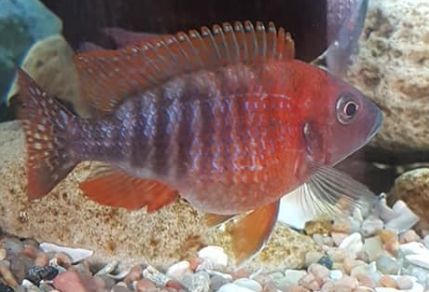
“Expert Opinion”
This disease is blamed by many well intentioned but ill-informed individuals on social media as being due to too much protein in the diet of the fish. One commentator wrote the following:
“Excessive proteins can also cause bloat among fish, mbunas most especially, as the fish cannot effectively digest the proteins in their stomachs. Herbivorous fish have longer digestive systems that are not designed to digest excessive proteins in comparison to the carnivores’ shorter digestive system. Do not feed your herbivorous fish foods that contain too much protein.”
The quotation above lacks scientific validity, it is more properly called a hypothesis. It doesn’t give a clear “cause-and-effect”. Why would a longer digestive system not digest proteins very well? This individual was asked for one reference that supported that hypothesis. They did not reply.
Persons who post this type of opinion will never reply with a reference. If they are well-meaning but incorrect, they don’t reply because they must realize their source reference is itself unreferenced. If they are being deliberately misleading for some profit-based motive (see below), they know the best strategy is to remain silent.
The website Cichlid Forum said:
“The digestive tracts of Mbuna are made for vegetable matter. They have long intestines designed to extract the proteins and carbohydrates from the hard-to-digest algae. Cows and other ungulates use several stomachs to digest grass. Mbuna, on the other hand, do it with only one stomach and a very long intestine. If you feed them too much animal protein (e.g., worms, shrimp, feeder fish), it will only be a matter of time before they develop an intestinal blockage, swell up, and die from the infamous Malawi Bloat.”
This “reference” does not actually say what causes an intestinal blockage. Why would an easily digested material give an intestinal blockage? There is no “cause and effect” here. There was also a complete lack of any references to journal articles. Given that there are literally thousands of journal article on fish nutrition, the absence of references is very telling.
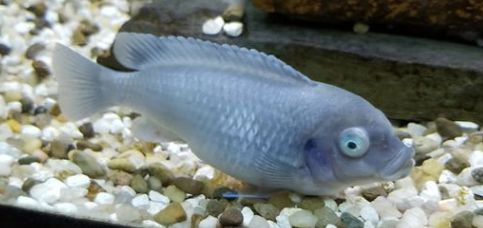
NONE of these commentators give a single reference paper or study which support their claim that high protein diet causes bloat. An extensive search of the literature from all the various ornamental fish research centers such as the University of Florida give ZERO papers connecting bloat to high protein food. This author has no less than thirteen books on fish nutrition. These books reference literally thousands of research papers on fish food. There is not one reference that connects high protein diets and bloat in fish. NOT ONE!
Social Media Anecdotal “Experience”
Then we have social media. An actual exchange was:
- “Bloodworms are the larvae of a midge. They are found by the billions in the waters of Lake Malawi and form a staple food in Lake Malawi which all fish can eat with abandon. The idea that high protein food like bloodworms causes Malawi bloat in mbuna is myth. In actuality high carbohydrates and low roughage are probably the cause of bloat. Peacocks and haps both frequently get bloat even though they are both carnivores.“
- “I have to disagree. From personal experience blood worms have given 3 of my mbunas bloat. The only time I have experienced bloat was the one time I feed mine blood worms. Never had an issue with it since. I saved one but lost 2.”
- “So your fish got bloat from feeding blood worms once?“
- “Yes. It was the only difference in anything being done. My parameters were great I was feeding them a decent flake food and I fed them blood worms one evening and when I got home from work one fish had bloat and then within the week 2 more did. I lost the first and last one to get bloat.“
This is very typical. Bloodworms have a problem. They live in very bacteria infested sewage water. So if they happen to have been unrefrigerated for even a few hours during truck transportation the bloodworms can “sour” and all sorts of bacterial toxins can be produced. The fish die from food poisoning, not from a high protein food.
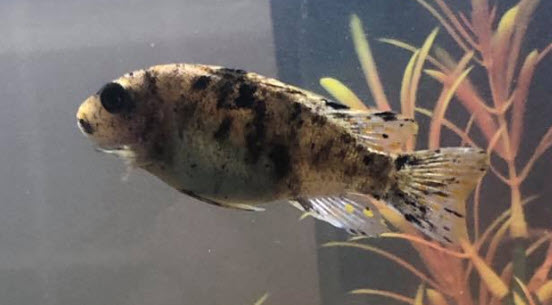
How This Myth Originated
The origin of the idea that protein causes bloat is found in the book “Handbook of Fish disease”, Dieter Untergasser, 1989, on page 115:
“In one case, because of a lack of time, beef-heart was fed exclusively for two months to an aquarium of discus. That led to enteritis in four of the sixteen discus, resulting in intestinal occlusion, where-by a 4-cm. stretch of intestine became 2 cm thick, filled with half-digested food; the fish died with severely bloated bodies”.
Vegetable protein is generally inside cell walls which must be broken down by the fish. Animal meat protein is more readily available and is digested more rapidly than vegetable protein. So how did feeding beef heart result in “half-digested food”? That simply makes no sense. Indeed, the opposite makes more sense.
The basic idea that beef heart for two months caused bloat in discus became the basis of the idea that protein causes bloat. Over the years this reference grew into the “fact” that protein causes Malawi Bloat.
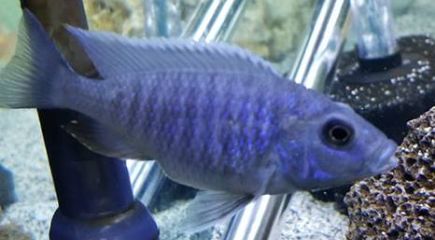
This old “research” is very inaccurate for several obvious reasons:
- There is an old saying in science the “correlation is not causation”. Simply because a high protein food and bloat occurred at the same time does not mean the high protein caused the bloat.
- There was no “control”, no aquarium which was fed something other than the beef heart
- There are several hundred disease pathogens which could be the cause of the fish dying.
- One aquarium is not a statistically meaningful test, to put it mildly.
- The folks who sponsored this book were Tetra, the German manufacturer of fish food which was in the 1980’s producing cheap fish food very deficient in protein.
This book has become a reference point for many people and many myths. Tetra Marketing department wrote the book!
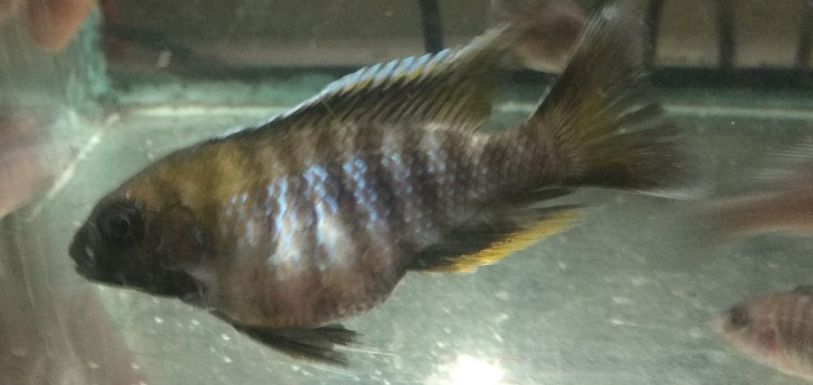
This 1985 book appears to be the first clear instance where a pet product manufacturer manufactured scientific sounding references that melded fact and fiction to produce profits for their company.
The myth that high protein food such as beef heart cases bloat was just one of the many myths that appear to have originated many years ago from the big German supplier of fish food, Tetra.
At that time beef heart was the preferred fish food by most experienced hobbyists and was very widely used as fish food. There were many reasons put forth now not to feed beef heart to fish: “beef heart causes intestinal obstructions”, “beef heart causes blood to congeal in the fish”, “the amino acid balance is incorrect for fish”, “high protein food causes Malawi bloat”, “avoid bloodworms as they cause bloat with mbuna”, etc..
None of these ideas is supported anywhere in the literature. None. But the usage of beef heart declined precipitously and the sale of dry prepared fish food became much more the “norm”.
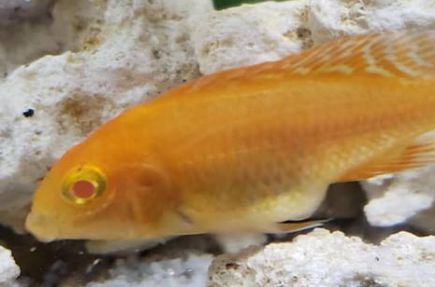
Research
This article reviewed many research books on fish nutrition:
- “Fish Nutrition and Feed Technology”, Garg, 2018
- “Tilapias, Biology and Exploitation”, K. Jauncy (2000)
- “Principles of Fish Nutrition”, W. Steffens (1989)
- “Practical Manual on Fish Nutrition and Feed Technology”, Jain, 2018
- “Nutrient Requirements of Warmwater Fishes”, Wittwer, et. al. 1977
- “Fish Nutrition”, John Halver 1972
- “Fish Nutrition and Feed Technology: A Teaching Manual”, Felix, 2012
- “Introduction to the General Principles of Aquaculture”, Ackefors et. al. 1994
- “The Biology of Fish Growth”, Weatherly, Gill 1987
- “Environmental Biology of Fishes”, Jobling 1999
- “The Physiology of Fishes”, Evans, Claiborne 2006
- “The Physiology of Tropical Fishes”, Val, et. al. 2006
- “Nutrition & Feeding of Fishes”, Raghunath, 2012
These books all referenced thousands of various research papers.
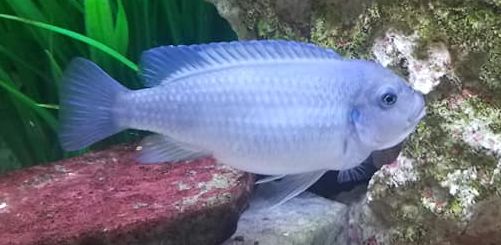
As the basis for the thousands of studies which make up the basis for these books, many fish are fed a given food for their lifetime and the progress of the fish charted.
Since even a 1% slower growth rate is significant for the low profit margin world of fish farming, there have been many things found which impact the growth rate of fish. For instance some fish digest chitin and some fish don’t digest chitin. So slight differences are noticed in fish fed chitin. But per this type of research the only foods which can SIGNIFICANTLY impact the health of fish is foods which have less than 30% protein or more than 50% grains and starches in them.
If one feeds juvenile fish at 6% of their body weight per day the fish grow very rapidly. But they get fatty livers. Commercial fish farms feed at 6% because they have to in order to turn a profit. I recommend feeding juvenile fish at half this level in order to prevent diseases. But the composition of the food has little bearing on the fatty liver issue unless one gets over 16% fat in the food.
None of these books made any mention of high protein food causing bloat. Not one reference in the thousands of research article included in all these books. NOT ONE REFERENCE!
Mbuna are supposedly are very prone to bloat. Mbuna are often identified as “herbivores” and are fed “vegetarian” diets high in carbohydrates. As the section on food showed, in nature Mbuna eat periphyton (algae, bacteria, protozoans) which is high in protein, high in fiber and low in carbohydrates. They probably should be fed a diet high in fiber but that does not mean a vegetarian diet which is high in digestible carbohydrate.
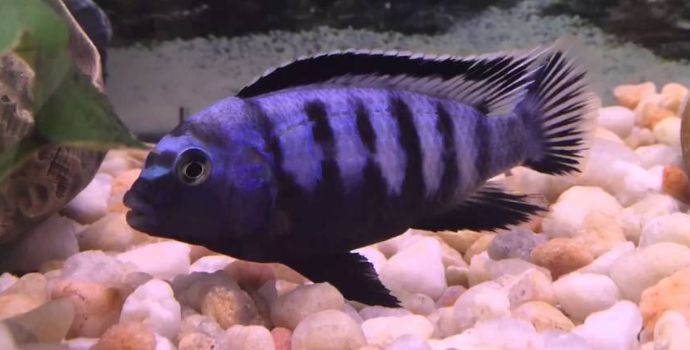
High carbohydrate diet will cause Malawi Bloat. A high carbohydrate diet (wheat, rice, corn, oats, potatoes, soybeans in flakes or pellets) causes a reaction in the gut of mbuna which precipitates the bloat. Here is a plausible line of causation:
- There are strong indications that fish don’t digest carbohydrate (wheat, corn, rice, oats, potatoes) very well. Many university studies for aquaculture (tilapia, salmon, and catfish raising) have indicated fish only absorb roughly 50% of the carbohydrates they eat.
- Mbuna need long intestinal residence times to penetrate the cell walls of the algae they consume to get to the protein rich cell contents (spirulina algae is 55% protein by dry weight, Google it!).
- If they eat flake or pellet food containing grains, corn or potatoes, large amounts of undigested carbohydrates can enter the intestines in the mbuna.
- Carbohydrates have a high “biological oxygen demand” (BOD). Meaning they remove oxygen from the fish’s intestines. Note that proteins have a relatively low BOD.
- A flagellated single cell organism called “hexamita” (Hexamitadea spironucleus) thrives in conditions with low oxygen. The bacteria Clostridium difficile (C. diff”), also thrives in low oxygen conditions. Both organisms are commonly found in necropsies of mbuna which have died from bloat. In addition there are a host of “undescribed” organisms which are pathogenic at low oxygen conditions.
- So the number of hexamita, C. diff. and many undescribed pathogens spiral out of control and infect the lining of the intestines.
- The lining of the intestines collapses, causing a classic intestinal blockage and bloat.
Carbohydrates are the problem, not proteins, by this line of reasoning. Dixon found that high carbohydrates cause Lake Malawi Bloat by this very line of causation (“Isolation of Clostridium difficile (Prevot) from the African cichlid, Nimbochromis venustus (Boulenger), with Malawi bloat”, Dixon 1997).
I won’t feed a food over 30% carbohydrates. Note that it takes some math to find the percentage carbohydrates. For instance a fish food might say: 35% protein, 8% ash, 8% water, 3% fiber, 8% fat. If one adds all the percentages one get 62%. One then has to subtract 62% from 100% to get 38%. The carbohydrate amount is thus 38%. This is not a food I would use as the carbohydrate content is higher than 30%.
The easy way to prevent this issue is to simply only use food with at least a 45% protein content by dry weight. Such foods will not typically have over 30% carbohydrates.
Further Articles
For those wanting more data on the many, MANY myths about fish food click on this link:
3.7. Banned Fish Foods
.
Return to Fish Food Menu
.
Aquarium Science Website
The chapters shown below or on the right side in maroon lead to close to 400 articles on all aspects of keeping a freshwater aquarium. These articles have NO links to profit making sites and are thus unbiased in their recommendations, unlike all the for-profit sites you will find with Google. Bookmark and browse!
.

Deb says
Somehow just found these articles. So incredibly pleased to find actual data not the plethora of anecdotal hoohaw that abounds as ‘fact’